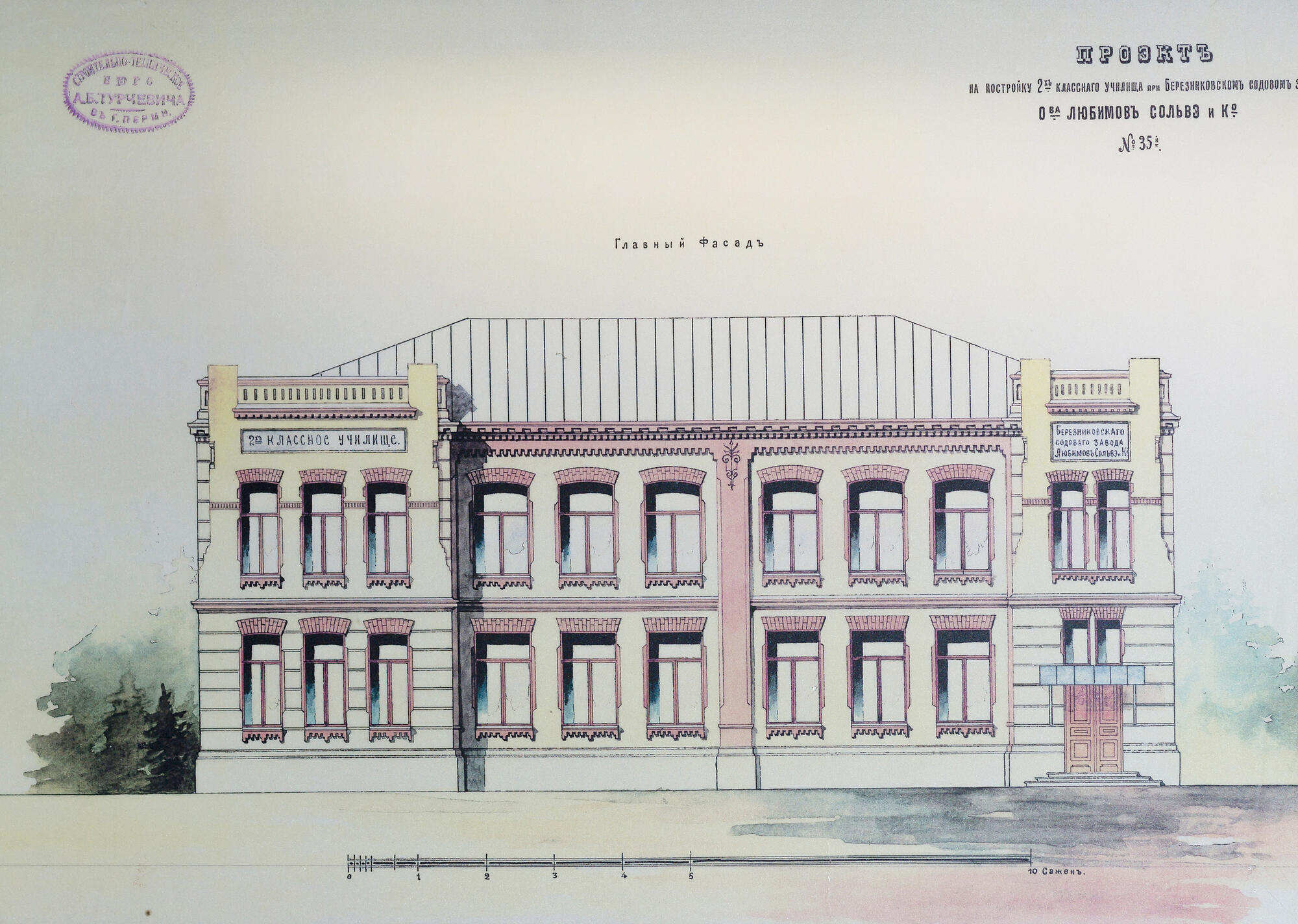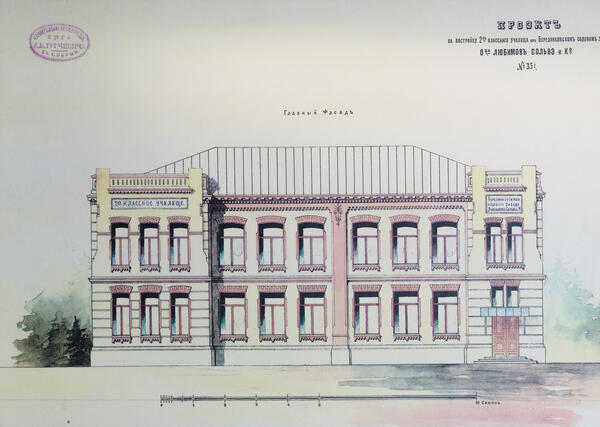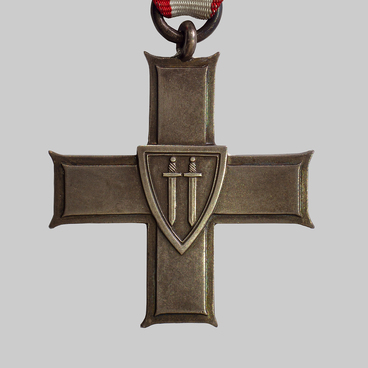In 1881, a Perm merchant Ivan Lyubimov and a Belgian industrialist Ernest Solvay signed a contract in Brussels to construct the first soda plant in Russia. In 1883, the plant was put into operation, at the same time they began to construct BereznikI village.
The village was proposed for accommodation of engineers and technicians and the management of the plant. Initially, the village consisted of a plant office, eight houses for two families each, a stone barracks and several apartments for the management. In 1890, a one-class school was opened for the children of plant workers. Then there were 190 students in his classes. Six years later, the school was transformed into a two-year school.
In 1894 five more stone houses were built two kilometers from the plant, and after the death of Lyubimov, in 1907–1912, seven four- and six-apartment buildings near the plant. By the beginning of the 20th century, 83 employees of the plant and their family members lived in furnished apartments in BereznikI. The workers lived in the nearest villages - Dedyukhino, LyOnve, UsOlye, ZyryAnka, VerEtye.
Constructed mostly as a whim for the plant owner Ivan LyubImov, the village at the Soda Plant was in many ways different from the nearest villages. According to the writer Dmitry MAmin-SibiryAk, it ‘looked European.’ The layout was developed by the Perm Construction and Technical Bureau of the architect Alexander TurchEvich.
Each building was constructed according to an individual design. Practically no wooden buildings were included in the project. The style of the buildings copied Western Europe. The architects combined elements of Gothic, Renaissance and Art Nouveau in their designs. The apartments had hot water supply, showers and bathrooms.
The paved streets in BereznikI were lit with electricity. A garden with a fountain was set out near the plant buildings. A local orchestra played in the garden on Sundays and holidays, and employees and factory workers strolled along the alleys.
A 10-bed ward hospital, Consumer Society, and an insurance company were opened to satisfy the needs of plant workers, employees and their families in the village. The owners and management of the plant established a social package for employees and workers: they gave loans for housing construction along with cash allowances for medical treatment and pensions.
In 1916 Boris Pasternak visited VerkhnekAmye. During this trip, the writer visited BereznikI, after which he called it ‘a small industrial Belgium on the Kama.’ There is a version that the first non-extant version of ‘Doctor ZhivAgo’ envisaged the action of the novel at the BereznikI soda plant.
The village was proposed for accommodation of engineers and technicians and the management of the plant. Initially, the village consisted of a plant office, eight houses for two families each, a stone barracks and several apartments for the management. In 1890, a one-class school was opened for the children of plant workers. Then there were 190 students in his classes. Six years later, the school was transformed into a two-year school.
In 1894 five more stone houses were built two kilometers from the plant, and after the death of Lyubimov, in 1907–1912, seven four- and six-apartment buildings near the plant. By the beginning of the 20th century, 83 employees of the plant and their family members lived in furnished apartments in BereznikI. The workers lived in the nearest villages - Dedyukhino, LyOnve, UsOlye, ZyryAnka, VerEtye.
Constructed mostly as a whim for the plant owner Ivan LyubImov, the village at the Soda Plant was in many ways different from the nearest villages. According to the writer Dmitry MAmin-SibiryAk, it ‘looked European.’ The layout was developed by the Perm Construction and Technical Bureau of the architect Alexander TurchEvich.
Each building was constructed according to an individual design. Practically no wooden buildings were included in the project. The style of the buildings copied Western Europe. The architects combined elements of Gothic, Renaissance and Art Nouveau in their designs. The apartments had hot water supply, showers and bathrooms.
The paved streets in BereznikI were lit with electricity. A garden with a fountain was set out near the plant buildings. A local orchestra played in the garden on Sundays and holidays, and employees and factory workers strolled along the alleys.
A 10-bed ward hospital, Consumer Society, and an insurance company were opened to satisfy the needs of plant workers, employees and their families in the village. The owners and management of the plant established a social package for employees and workers: they gave loans for housing construction along with cash allowances for medical treatment and pensions.
In 1916 Boris Pasternak visited VerkhnekAmye. During this trip, the writer visited BereznikI, after which he called it ‘a small industrial Belgium on the Kama.’ There is a version that the first non-extant version of ‘Doctor ZhivAgo’ envisaged the action of the novel at the BereznikI soda plant.



